7 Ways to Eat Pine Trees, Year-round
From cambium to cones, pine trees are an excellent food source. And unlike many other wild plants, you can eat pine trees all year long.
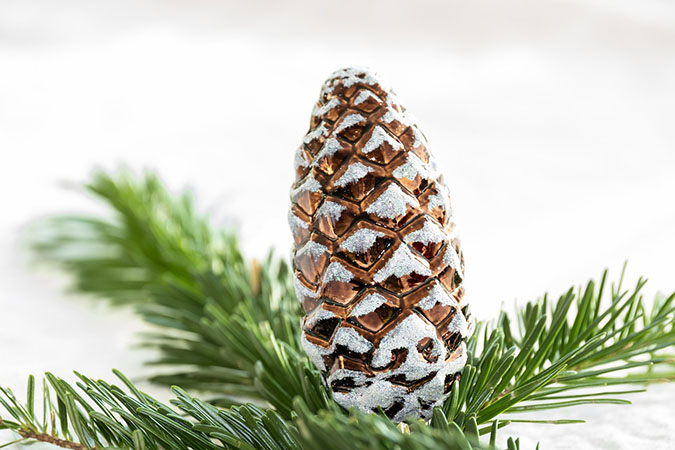
I think I’ve always loved pine trees. I remember, as a child, visiting my grandmother and climbing a particularly tall one in her backyard. From time to time, she would have us grandkids rake up the dense blanket of needles littering the ground. She told me once that when she died, we wouldn’t have to bury her. We should just lay her out under one of her pine trees and let it cover her over. Dark humor perhaps, but it made the point. I grabbed the rake.
Pine trees are useful for more than just climbing and creating chores for your grandkids. They’re also an excellent source of food and medicine. And unlike many other wild plants, you can eat pine trees and use their medicine throughout the entire year.
How to ID Pine Trees
Pine trees are native mainly to the Northern Hemisphere. However, there are pockets of native trees elsewhere, and they have been introduced in much of the world. This group contains over 200 species and can grow in a wide range of environments.
Many pines prefer an acidic soil, though this is not universally true. All pines are edible.
You May Also Enjoy:
“How to Sheet Mulch for an Abundant Garden”
Pine trees are cone-bearing evergreens with needle-shaped leaves. They have a number of potential look-alikes. The most common are spruce, fir, hemlock, and yew trees. Among this list, only the yew is dangerous if misidentified.
Pines are best differentiated from these others by their needles, which appear in bundles of 2, 3, or 5. All of the others have single needles or needles coming out opposite from one another.
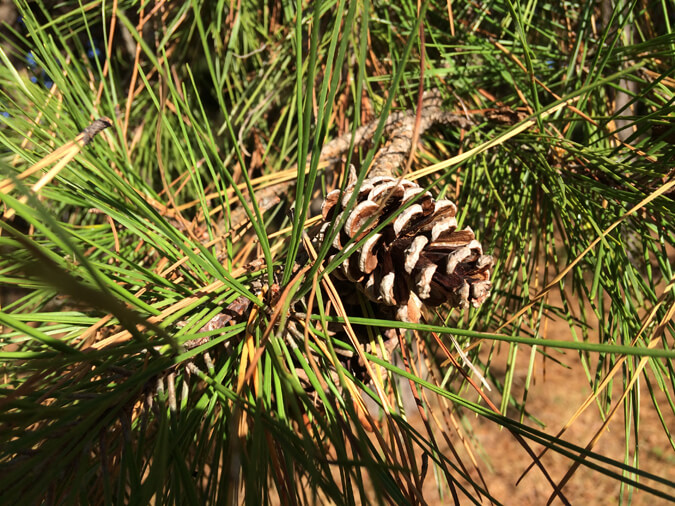
Also, the Australian pine is not a true pine. It’s a she-oak, which isn’t actually an oak, either. As with the other look-alikes, it lacks needles in bundles.
Let’s Eat Pine Trees!
You don’t have to be Euell Gibbons to enjoy eating pine trees. After all, “many parts are edible.” Let’s dive right in.
How to Eat Pine Nuts
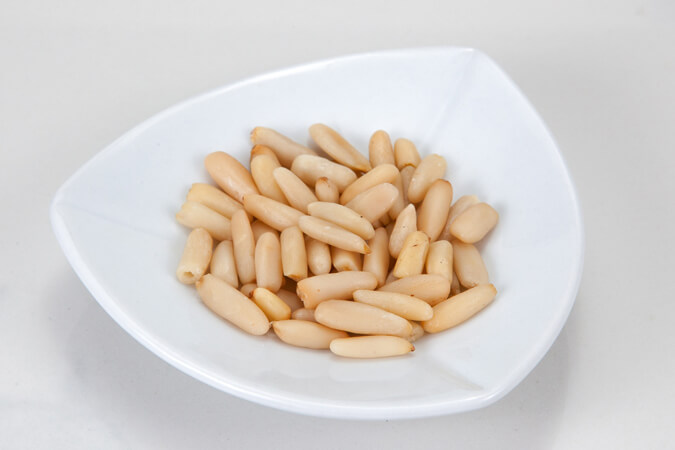
Most of us have probably eaten pine nuts at one time or another, in a salad or other meal. And while all pine nuts are edible, most pine seeds are just too small to be worth dealing with.
Sadly, the cone size won’t tell you the seed size. If you want to check your local pines, here’s how. Pick the cones when they’re turning brown, but before they open up. Place them in a paper bag in a dry, warm location (near your fireplace is great).
As they dry out, they’ll pop open and drop their seeds. Hopefully, you’ll find nice, big seeds. But more than likely, you’ll find a bunch of tiny, black specs at the bottom of the bag.
You May Also Enjoy:
“15+ Ways to Use Cleavers—From Dinner to Detox”
“19 Benefits of Hibiscus: Blood Pressure Regulator, Cancer Fighter, Liver Protector, and Much More!”
“12 Uses for Rose Petals — From the Kitchen to the Boudoir (With Recipes)”
If you have the large seeds, you can put them in a bag and work them over with a rolling pin. This will separate the hull from the seed. Now they’re ready to be eaten. The tiny ones could be eaten as-is, but I doubt you’ll be able to digest them enough to get any nutrients out of them.
Male Cones Can Be Eaten Raw, Baked, or Boiled
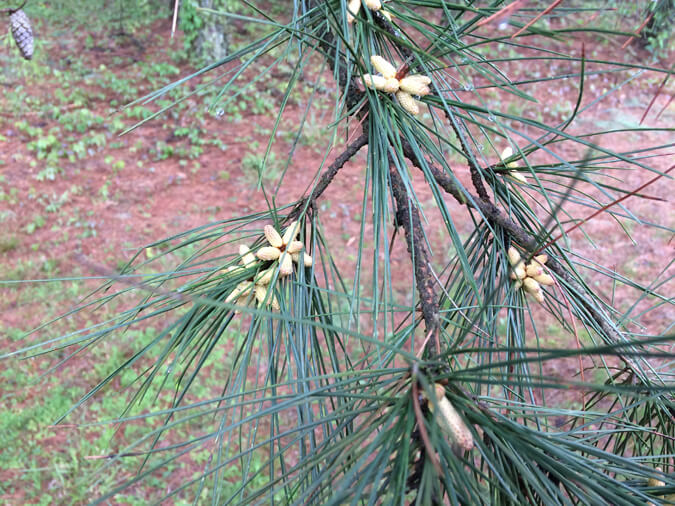
Have you seed the clusters of small, soft cones toward the tips of pine branches? Those are the male cones. These are the pollen-producing parts of a pine tree and are only available seasonally. They can be eaten raw, baked, or boiled.
If you’re concerned about the pollen, read on. You just might change your mind.
Nutritional Benefits of Pine Pollen
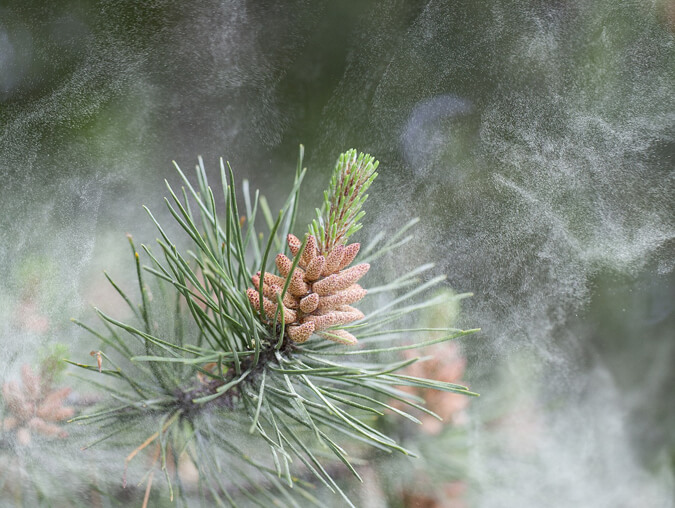
Let’s start off by saying that, yes, people can be allergic to pine pollen. But pines are often vilified beyond what they deserve.
Pine pollen is big and heavy. This makes it very visible when a big cloud of it drops from a tree. But that size also means that it doesn’t travel very far.
The tiny, lightweight pollen that’s produced by other trees may spread for miles, and you don’t even know it’s around you. So while you might very well be allergic to the pines around you, it may rather be the case that some other tree is making you sneeze and you blame the pine because it’s the pollen you can see. Besides that, many people claim that eating pollen helps them to lower their allergy response.
You May Also Enjoy:
Pine pollen is a good source of nutrition, including protein, folic acid, several B vitamins, and vitamins C and E. It even contains some vitamin D, which is not common in plants. Pine pollen also contains several minerals and trace elements.
One of its more interesting properties is that it contains a chemical very similar to testosterone. While the levels are not high enough to be frightening, they may contribute to some of the health benefits of pine pollen, such as lessening inflammation, lessening the effects of arthritis, countering the effects of excess estrogens, increased prostate health, and anti-fatigue effects.1)2)3)4) Pine pollen also has liver protective properties.5)
To gather pine pollen, place a paper bag over the end of a branch. Turn the branch down and tap or shake the bag. The time of year for this is usually spring, but leave a little wiggle room for your climate and species of pine.
Some people prefer pine pollen in tincture form. Others take 1-2 spoonfuls. If you really are allergic to pine pollen, I’d recommend some caution here.
Pine Needles for Tea and Medicine
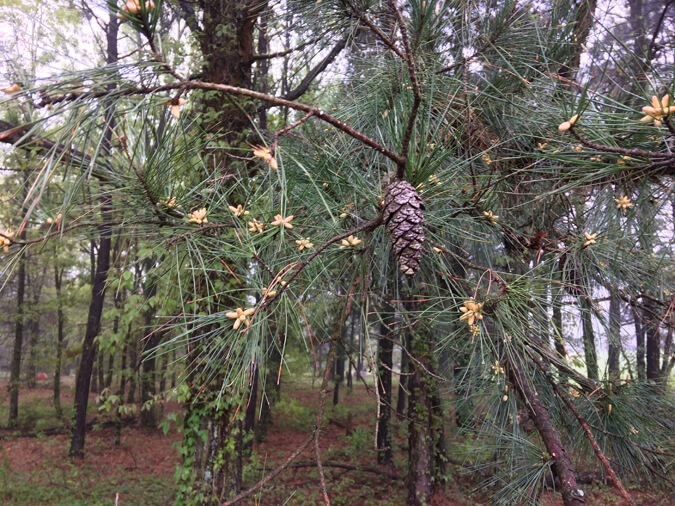
Pine needles are never out of season. While they are too tough to be eaten whole, they are commonly used to make herbal tea. Just place some green needles into a cup, pour boiling water over them, and cover them until the liquid is cool enough to drink. Covering the top of the cup during steeping is important, as it helps to prevent volatile oils from escaping. Add lemon and honey to taste. The flavor is similar to a good cough drop.
You May Also Enjoy:
“How to Make Herbal Infusions”
“How to Make Your Own Tinctures, Salves, and Essential Oils”
Pine needles can also be chewed whole to extract the juices, and then spit out. Taste varies from tree to tree and from branch to branch. If you don’t like the taste of the first tree you come to, don’t be discouraged. Try again. Some pine needles are actually quite pleasant.
Medicinally, they also have quite a lot going for them. They’re high in vitamin C and are traditionally used for respiratory issues. They also have anticancer and antimicrobial properties.6)7)8)9)
Pine Bacon and Other Uses for the Inner Bark (Cambium)
This one is confusing to people at first. When I talk to people about pine bark, they give me a funny look. They’re thinking about the outer bark, which is not edible. Or they’re thinking of the inner, structure-supporting wood in a tree. That’s not edible, either. Or maybe they just picture me chewing on a tree like a beaver.
The edible part is a thin layer of living wood, just under the outer bark. It’s called the cambium layer.
To get to it, just scrape or cut back the outer bark. It’s the light-colored layer just beneath. Make a cut with your knife and peel it right off the tree. You’ll know when you’ve gotten it all because the layer below will be darker and will be much harder to peel off. It really is a thin layer. Think “bacon.” More on that in a moment.
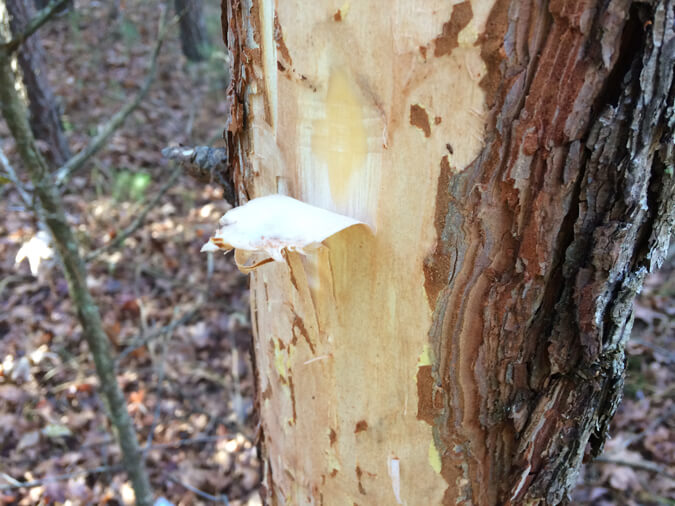
The cambium is available year-round, but take care not to harm the tree. If you go around the entire trunk, you’ll remove the tree’s ability to circulate nutrients and you’ll kill it. Either limit your harvest to a small section on each tree or, better yet, harvest cambium from the branches.
As you’re working on a tree, you’ll see little droplets of pine sap starting to bead up where you’ve peeled away the bark. Depending on the time of year, this sap can be rather sweet. I showed this to my kids one day and they spent the next several minutes licking the tree. Give it a try.
You May Also Enjoy:
Pine cambium can be prepared a number of ways. Eat it raw, boiled, roasted, or fried.
Fried is probably the best compromise between taste and ease of preparation. Cooked this way, it’s often called pine bacon. I like to fry it in butter, though olive oil is another popular choice. Bacon grease would probably work wonders, as well.
I recommend cooking it at a lower temperature than you would use to fry bacon. This helps it become crisp without burning. I’ve also had better success with extra thin slivers, though I’ve never heard anyone else mention this. So maybe I’m just a bad cook.
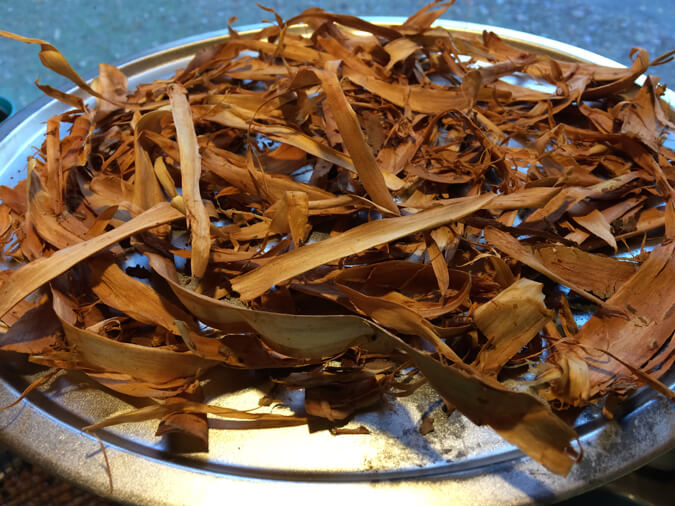
A better, though slightly more labor intensive, method is to dry it and grind it into a flour. This is best if you’re having trouble with the bark being too fibrous and hard to chew.
You can air-dry the cambium, place it in a dehydrator, or put it in your oven at 200 degrees F (93 degree C) for about 20-30 minutes. Then, give it a spin in your blender to roughly chop it up, and move it to a coffee grinder to make a fine powder.
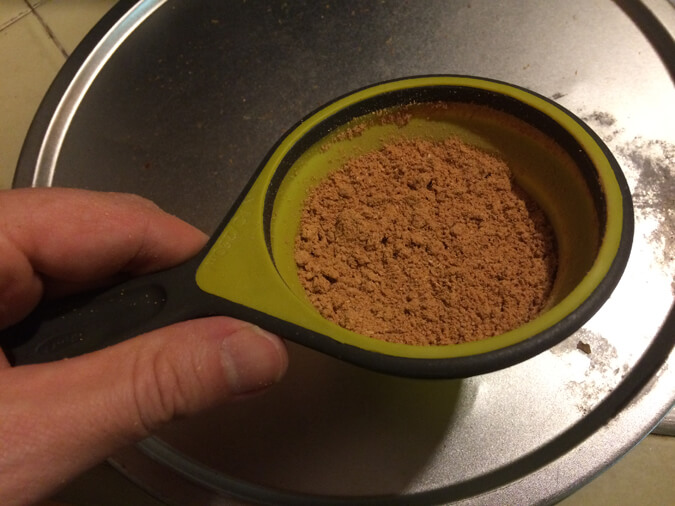
You can add this powder to soups, breads, or other recipes. Mix powder and milk to make a simple, tasty gruel. You can heat this mixture as you would oatmeal, but I think it’s fine cold, too.
Or, if you want to introduce someone to foraging, try making pine tree cookies. This is an easy, delicious method that guarantees a good experience with foraged foods. To make pine tree cookies, start with your favorite oatmeal cookie recipe, but replace half the oats with pine flour. That’s all there is to it. Big secret, huh?
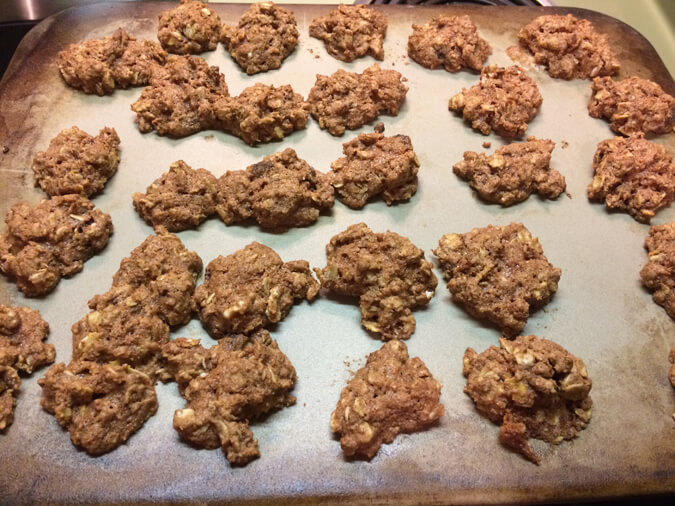
Pine Sap for Survival
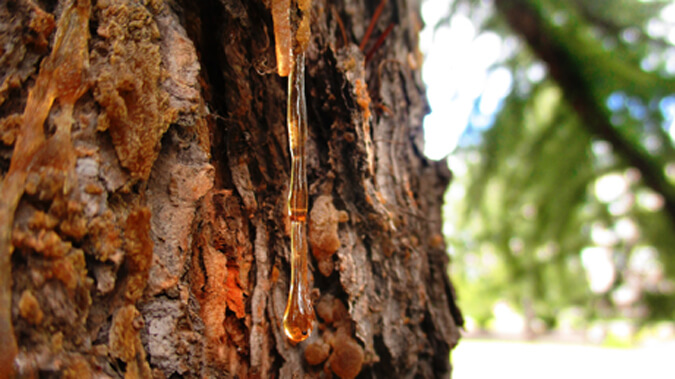
Pine sap is another year-round resource. Less a way to eat pine trees than a tool for survival, it has multiple uses as glue, as fire starter, and in first aid. Pine sap is naturally antibacterial and can be applied to wounds, either as a protective covering or to help glue them shut.10) It’s not commonly eaten, although there’s really nothing inedible about it. It’s just very sticky. It has traditionally been used as a decongestant in salves and cough drops.
Eating Young Pine Roots
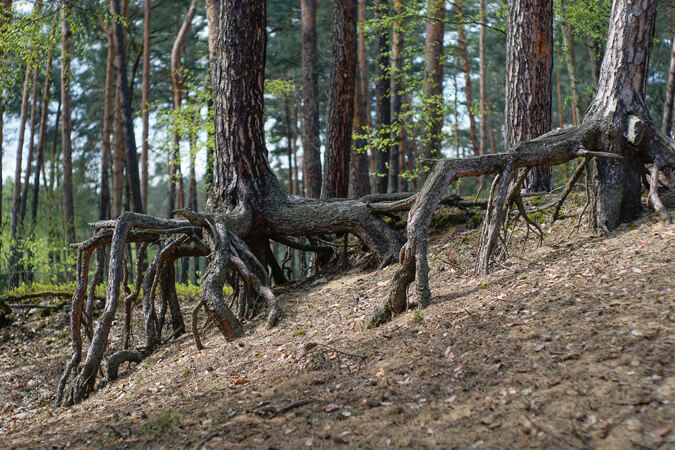
The young roots are edible if you strip the bark off. You can also save the bark and soak it in water overnight to extract the plant’s sugars.
What Do You Think?
Have I gotten you curious enough to go out and sample the parts of a pine tree? Or have you tried to eat pine trees before? Let me know in the comments!
_________________________________________
This article was originally published on December 8, 2018.
Psst! Our Lawyer Wants You to Read This Big, Bad Medical Disclaimer –> The contents of this article, made available via The Grow Network (TGN), are for informational purposes only and do not constitute medical advice; the content is not intended to be a substitute for professional medical advice, diagnosis, or treatment. Always seek the advice of a qualified health care provider with any questions you may have regarding a medical condition. If you think you may be suffering from any medical condition, you should seek immediate medical attention. You should never delay seeking medical advice, disregard medical advice, or discontinue medical treatment because of information provided by TGN. Reliance on any information provided by this article is solely at your own risk. And, of course, never eat a wild plant without first checking with a local expert.
| ↑1 | Lee, Kyung-Hee, and Eun-Mi Choi. “Effect of Pine Pollen Extract on Experimental Chronic Arthritis.” Phytotherapy Research23, no. 5 (2009): 651-57. doi:10.1002/ptr.2526. |
|---|---|
| ↑2 | Lee, Kyung-Hee, Ae-Jung Kim, and Eun-Mi Choi. “Antioxidant and Antiinflammatory Activity of Pine Pollen Extractin Vitro.” Phytotherapy Research23, no. 1 (2009): 41-48. doi:10.1002/ptr.2525. |
| ↑3 | CONG Tao, ZHAO Lin, BAO Shan-fen. “Study on the treatment of rats with benign prostatic hypertrophy by Masson Pine.” |
| ↑4 | WU Jing-jing, HUANG Pei-huang, ZHU Liang, LIN Fu-lan. “Anti-fatigue Effects of Flavone in Pines Massoniana Pollen on Mice.” |
| ↑5 | LIE Tie, ZHANG Chi, BAO Liu-xing, et al. “Study on the protective effect of pine pollen on alcohol-induced acute hepatic injury.” |
| ↑6 | Kwak, Chung Shil, Sung Chae Moon, and Mee Sook Lee. “Antioxidant, Antimutagenic, and Antitumor Effects of Pine Needles (Pinus Densiflora).” Nutrition and Cancer56, no. 2 (2006): 162-71. doi:10.1207/s15327914nc5602_7. |
| ↑7 | Jeong, Jin Boo, Eul Won Seo, and Hyung Jin Jeong. “Effect of Extracts from Pine Needle against Oxidative DNA Damage and Apoptosis Induced by Hydroxyl Radical via Antioxidant Activity.” Food and Chemical Toxicology47, no. 8 (2009): 2135-141. doi:10.1016/j.fct.2009.05.034. |
| ↑8 | Choi, M.-Y & Choi, E.-J & Lee, E & Rhim, T.-J & Cha, B.-C & Park, H.-J. “Antimicrobial Activites of Pine Needle (pinus densiflora Seib et Zucc.)” Extract. 25. 293-297.] (1997). |
| ↑9 | Wei, Feng-xiang & Li, Mei-yu & Song, Yu-hong & Li, Hong-zhi. “[Apoptosis and activity changes of telomerase induced by essential oil from pine needles in HepG2 cell line].” Zhong yao cai = Zhongyaocai = Journal of Chinese medicinal materials. 31. 1197-200. (2008) |
| ↑10 | Vainio-Kaila, Tiina, Aino Kyyhkynen, Lauri Rautkari, and Anja Siitonen. “Antibacterial Effects of Extracts of Pinus Sylvestris and Picea Abies against Staphylococcus Aureus, Enterococcus Faecalis, Escherichia Coli, and Streptococcus Pneumoniae.” BioResources10, no. 4 (2015). doi:10.15376/biores.10.4.7763-7771. |


No comments:
Post a Comment